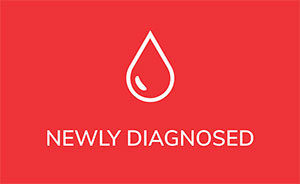By Susan J. Leclair, PhD, CLS (NCA)
What tests to do?
With an overall understanding of how the system functions, we can look at what testing can be done and what it can tell us.
As the immune system is complex, so is testing. The best testing for antigens is to isolate a protein large enough to be antigenic and specific enough so that it is only found in that one situation. You can choose a test for the presence of active inflammation. One example is the non-specific immunity test, the Cross-Reactive Protein (CRP). Monitoring ongoing chronic inflammation is done with the erythrocyte sedimentation rate (ESR). You can also assess the amounts of interleukins and other cytokines. One issue with these types of tests is that this is non-specific immunity so there is no way of knowing what triggered the positive result. You only know that that there is something going on somewhere, for some reason. The next step is to find out what, where and why.
The ideal test is positive for one antigen. That sometimes doesn’t happen. For example, a test for infectious mononucleosis can be positive for several antigens. This then requires a narrowing down of potential agents, usually by a medical history, detailed physical exam and other tests. This too can be slow. So, if testing for antigens is sometimes difficult, is there another way?
Testing for the actual chains of DNA that a specific virus or other organism carries is typically done by a high complexity method called polymerase chain reaction (PCR) in which suspect DNA is tested for those specific codes. It takes time but is very sensitive. Another way would be to test for the product of those codes. If you know that organism ”X” also makes a specific protein, then you can test for the presence of the product. This can be done quite rapidly but if the organism changes part of the protein (variant), then the test might not recognize it.
Another way to test would be to determine if the person produced any antibodies. That would assume that the organism in question elicited a specific cell response and that the organism was in sufficient numbers and duration to allow for this to happen. In the case of infectious mononucleosis, synthetic antigens are mixed with the serum of the patient and, if the antibodies are present, there should be a binding reaction. This type of test requires a high-quality supply of antigen and should not be used until the antibodies have been made in sufficient amount, so test at 10 days to 2 weeks. Two issues with antibody testing are that it takes time for the antibodies to be made so an early positive is not likely, and that a positive result will not tell you if the antibodies are protective or not.
For certain antigens, there is one antibody test that will be used. For others, the test is specific to the type of antibody present. This allows you to determine if the person has had the antigen exposure recently (IgM antibodies) or sometime in the past (IgG antibodies). Lyme disease testing uses this technique.
In the case of SARS-CoV-2, there are two different antibodies to test. The first is to test for antibodies to the spike (S) protein. The spike protein is part of the ability of the virus to attach itself to the cells in the upper respiratory tract. It is the protein that is being used by the vaccine manufacturers to make the antibodies. Testing for this will demonstrate that the individual has been vaccinated and will also be positive in people who had COVID-19. The current issue is that variants are occurring due to exposure rates and there is concern that these variants might not be responsive to our current testing.
Antibodies against the nucleocapsid (N) protein are present in people who have had the actual exposure/disease. An easy way to deal with this is that if you had the disease, you made both antibodies, but if you had the vaccine, you are positive for only the S protein. This is not new. Testing for hepatitis B differentiated between those who have had the disease and those who have had the vaccine.
Phew! We have taken a long road through the immune system. I hope that reading this has given you a general understanding of the brilliance of the system and some of the pitfalls that face it.
Susan Leclair, PhD, CLS (NCA) is Chancellor Professor Emerita at the University of Massachusetts Dartmouth; Senior Scientist, at Forensic DNA Associates; and Moderator and Speaker, PatientPower.info – an electronic resource for patients and health care providers.




